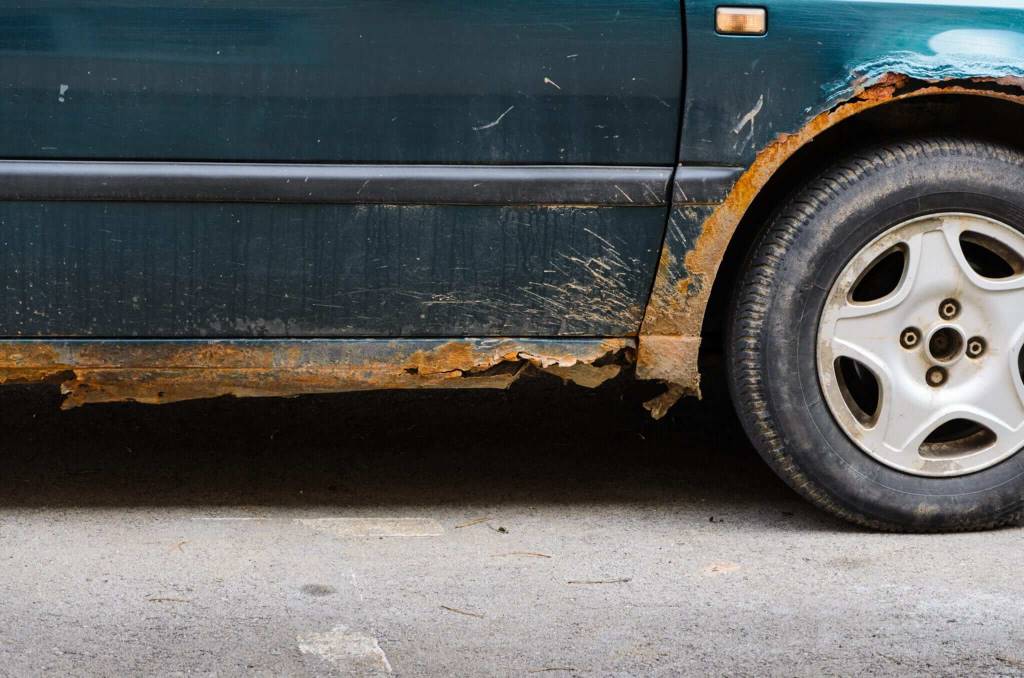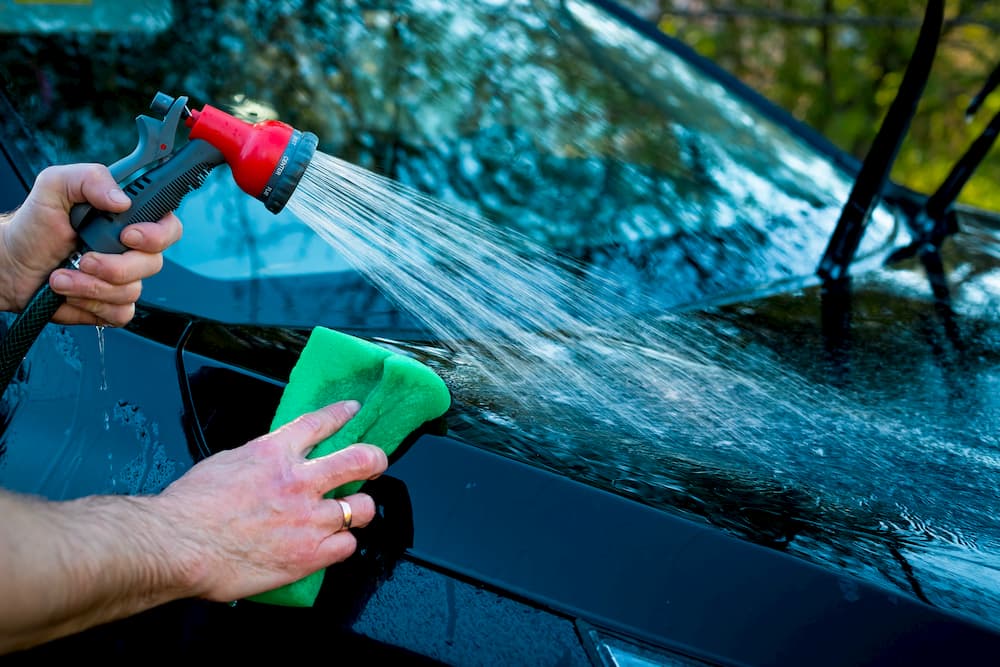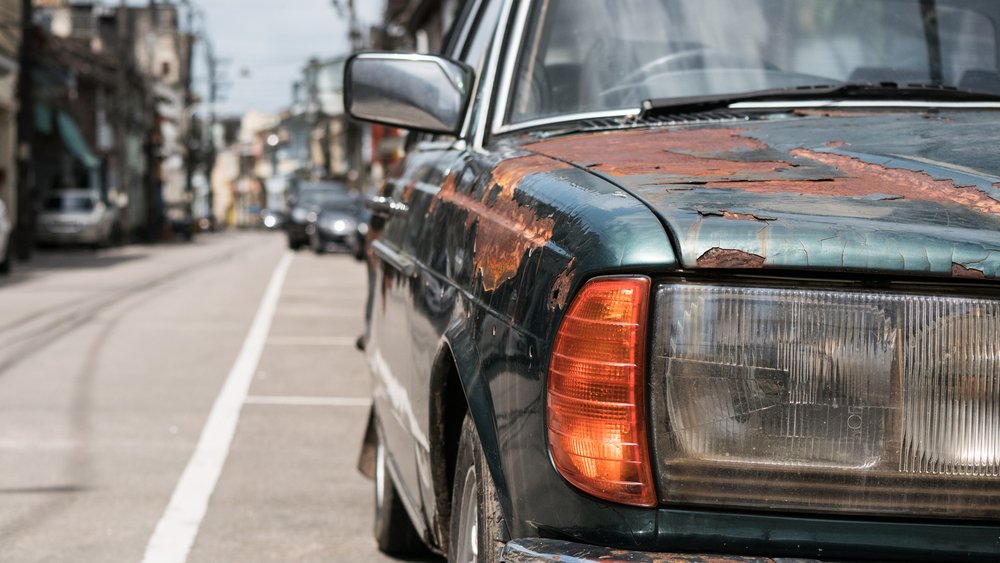All metals are capable of undergoing a complex electrochemical process. The process can easily lead to the deterioration of their aesthetic and also physical properties. In short, corrosion can weaken a metal’s structural integrity and strength, making it less aesthetically pleasing. The material used in automobile manufacturing is metal.
As such, cars have a higher risk of corrosion. Therefore, any sensible car owner must learn how fast does rust spread on a car and how to prevent it from being incurable. This not only preserves the longevity and structural integrity of the vehicle but can also help keep the overall aesthetics and the car’s value. So let’s get on the rusty notices with Car From Japan right now.
Contents
How Fast Does Rust Spread On A Car
A rusted car will never bring car owners any pleasant experience. If your car is at risk of being rusted or you may feel suspicious at some points, you should keep a close eye on these areas to make sure that you are ahead of the rust, not the rush taking the lead itself.
We will show you some common reasons that contributed to how fast does rust spread on a car:
- The metal pieces’ cleanliness
- The grade of steel used
- Presence of contaminants in the metal
- The electrolyte on the metal surfaces
- Temperature
- Aerobic and anaerobic factors
Rust spots can appear anywhere on a car’s body. As oxidation can form inside metal car parts or pieces and extend fastly, you should know that the rusted car surface is solely the beginning of the problem. Exterior paint bubbling is one of the visible signs of corrosion so keep an eye close.
There are a few spots that are vulnerable on your automobile that you should pay close attention to. You should examine the following components on your vehicle to have a chance to prevent rust as soon as possible.
- Car frame rails. These are the rails running underneath the doors on both sides of an automobile.
- Wheel wells: The curves above your tires are prone to rust, particularly in long-used cars without arch liners.
- Exhausts: Moisture from the interior and outside of the vehicle can accumulate in your exhaust tailpipe, which can be trapped by mud and debris.
- Suspension. Because of its proximity to tires, which flick up dirt and other particles underneath the automobile. This part is prone to contact with moisture.
- Car floor. Make sure to clean your carpet and inspect underneath it for signs of rust.
- Windscreen/Windshield. Prone to contact with the environment and long-time-forming chemicals.
- Doors. Check inside and out for that ugly dark flaky orange area that rust produces.

If your car’s operating environment often has a lot of water, salt, and oxygen, its protective paint will soon leave rust marks on the surface. What determines the duration of rust spreading on a car is the point when it corrodes the metal and the exposed environmental conditions.
The car exterior is often mostly made of steel, which means it can start to rust in as little as 5 to 6 days. However, this fast rusting duration is rare. Unless the car paint is scratched, damaged in a few places, or the car is old, some may take a few months to make things different.
However, some climates will cause your car to rust faster than others. For example, if you live near the sea, salty air will cause the vehicle to rust faster and even more severely than a desert-operated one.
>> Check now: Tips on Repairing Rust Damage in the Car- Must Read
The Secret To Prevent Rust On A Car
Here are some notes to help stop or at least minimize the rusted area on your car.
Perform regular car rust checks
One of the first things you must do is to perform a thorough inspection of your vehicle. The best way to prevent rust is to make sure you do not have anything for that to happen. If there are already rust spots on your car, then prevention will be less effective. Therefore, when detecting rust, you must handle it immediately to avoid that process happening faster and spreading out the other locations.
Wheel and car rims
In checking the location of rust on the car, it is best to start at the bumper and rims. These areas are easy to overlook as they may not be easy to see. The main problem is that parts of the car can have a lot of dirt that can cover up any rust developing underneath.
You may want to remove the tires one by one to check. This will give you a better view of each wheel. Clean the inner wheel first by spraying it with water. Be sure to dry the surface very well before proceeding with the test. Shine a beam of light onto the inner wheel surface to help visualize areas of rust or corrosion. While you are at it, be sure to check the inner surface of the case as well.
Areas where vehicle parts connect
Another area where you may want to check for rust is any part where two components, construction, or materials are connected. These can include the door frames, the area between the fenders and the hood, and the bumpers added after purchase. To prevent rust, manufacturers apply paint to eliminate the risk of friction between two metal surfaces. Unfortunately, with the constant rubbing action, the car paint can wear down faster than you think. This exposes the underlying metal and causes it to rust. Look for signs of bubbling paint as rust may have developed underneath this bubble.
Draining hole
Modern cars always have drainage holes in the passenger cabin floor. They are commonly found along the bottoms of rocker panels and doors. Drain holes facilitate the removal of rainwater. If your car comes with a sunroof, then you know that a clogged sunroof drain hose is a frequent-met problem. Removing obstructions in these drain holes and drains will help prevent water buildup in your vehicle.
If your car floor is dept in flood, quickly go to professional car care centers to do car interior cleaning services.
The bottom of the car
One final area you must check regularly is the underbody of your vehicle. This part of any car receives the most abuse on any given day. They are exposed to lots of sugar salts, winter deodorizers, moisture, and which can accelerate rust formation. The best time to check the bottom of your car for rust is during a car wash or an overall seasonal inspection. In addition, you also need to check the engine compartment to avoid the rust layer affecting the engine compartment.

Wash your car often
If you want to prevent rust from starting or spreading, then you must make it a habit to wash more often. Washing your car should always require very thorough drying of all wet parts. Residual moisture on any metal surfaces on your vehicle has the potential to cause rust.
It is important to understand that dirt will not cause corrosion. However, these can rub against the car’s protective paintwork. The paint is not very thick. With constant friction with road debris, this thin protective coating can also wear down. And that is when the corrosion can develop faster than ever.
Bird droppings appear to be benign organic matter. But the organic compounds found in this animal waste can also cause a chemical reaction on the vehicle’s clear coat. The same is true for automotive fluids such as brake fluid, automatic transmission fluid, and fuel, among others. If any of these liquids spill onto the vehicle’s metal parts, corrosion is likely.
Of course, the rust we’re talking about will develop over time, not overnight. So it’s crucial to clean your car and wash it occasionally, every weekly frequency may be ideal. This act will help remove any dirt, sand, and road debris that may have built up in hard-to-reach areas like wheel wells. The inside of the bumper as well as the underside of the car are also areas that you have to wash very thoroughly.
If you notice bird droppings or car chemical spills on your car, don’t wait a few weeks before you start washing it. These chemicals and compounds can eat through the paint that protects your vehicle.
In learning how to prevent rust on cars, regular and frequent washing often helps. However, a more important operation after washing is drying the car. Under no circumstances should you leave your vehicle wet. This is an open invitation for rust to begin to form.
And since you’re ready to wash and dry your car, you can also invest in the best anti-rust sprays for cars. Waxing your car after washing also benefits a lot. This provides a smooth surface layer acting as a barrier between the body paint and the water.
It is also wise to keep your car’s interior surfaces dry and moisture-free. If there are spills in the cabin, dry them all at once. Don’t let the water sit on the floor for a long time there as this can lead to rust on the car floor. Let’s combine cleaning under the engine compartment!

>> See more: 8 Tips For Cleaning Your Car To Have A Sparkle-clean And Spotless Interior
Apply anti-rust products on your car
All modern automobiles undergo extensive application of anti-rust technologies before they even hit the assembly line. Some manufacturers apply several layers of anti-corrosion automotive paint on the bodywork. Some car manufacturers apply phosphate-converted chassis coatings, while most quality underbody coatings must use zinc coating because it is less expensive.
However, as we mentioned, exposure to the elements can corrode the paintwork of a vehicle. Similar compounds can interact with anti-rust treatment. So it’s a good idea to apply one of the best anti-rust sprays for cars you can buy.
Before applying these products to your vehicle, ensure you have cleaned, washed, and dried your vehicle first. It makes no sense to apply rust protection to a car on surfaces containing dust particles. So you should always follow the product’s instructions for the smoothest process and best result.
What to do when the car starts showing signs of rust?
If you detect any signs of corrosion on your vehicle, you must deal with it immediately. Hesitating or waiting for it to get worse will prevent you from keeping the integrity of your car, and you will not have to waste more time after fixing the problem.
There are rust repair kits available in the market. Be aware that these products only work on minor rust. These remove rust to prepare the surface for a replacement primer application. If you do not want to use such a rust repair kit or if the rust is more severe, you can use sandpaper instead.
- Start with 180 grit sandpaper, then 320 grit, before finishing it with 400 grit. This will help remove rust from the surface while smoothing it as a final step.
- After removing the rust, you can apply a primer to the affected area. Allow it to dry completely. Next, get a car paint touch-up that matches the body color. Apply paint according to the manual instructions.
- The final step in managing minor rust on your vehicle is the application of a high-qualified clear coat. You can purchase a clear car coat spray from your auto supply store. Again, follow the coating instructions to smoothen the process and save you more time.
A quick reminder is that you can repair minor rust areas in your vehicle yourself. However, if the corrosion is a bit severe that it has gone through the metal of the bodywork, or if there is extensive damage, it is better to have the body repaired by professionals.
In addition, to prevent rust on your car, you must clean it regularly with suitable methods and tools. You can also regularly inspect the prone-to-rust areas to avoid and notice the problem from up first.
Overall, it is always better to prevent it in advance rather than only fix things after everything has happened before.
Wrapping Up On How Fast Does Rust Spread On A Car
We have scrolled through some worth-to-noted information on how fast does rust spread on a car. We hope you will gain better insight into this issue and have good preparations for any rusty-dusty areas that happen in the future.
For more helpful car maintenance tips, follow Car From Japan today!



